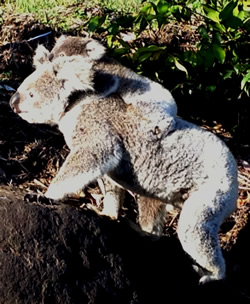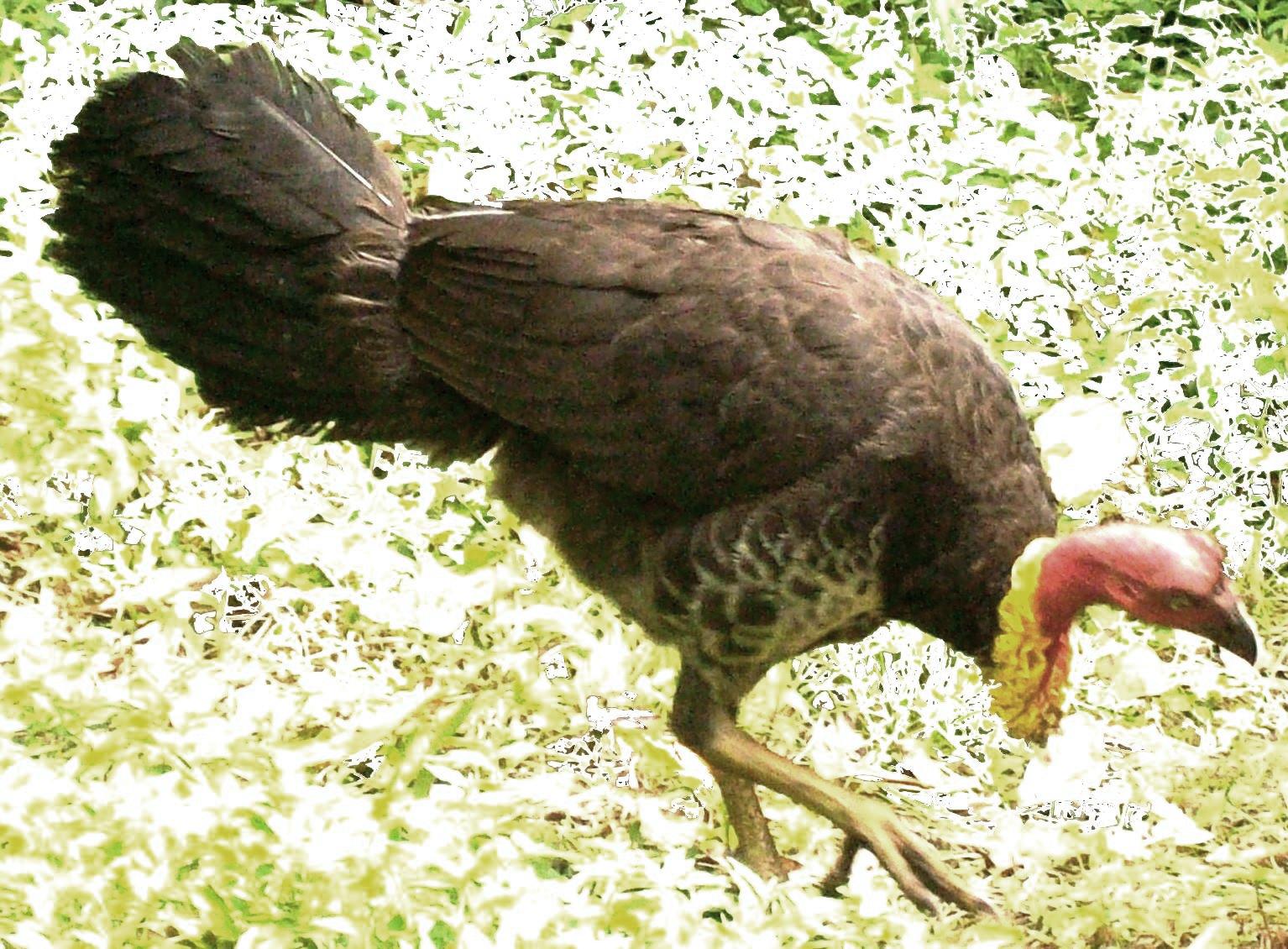
Though not strictly rainforest animals, koalas are animals of the forest edges and since we have cleared the Lantana and other weeds from the area their presence in the Eucalyptus forest and other parts of the Gardens has increased. They like it here and are very tolerant of us working beneath their trees. In fact we occasionally see them on the ground even when there are people around. A recent sighting of a mother and baby thrilled all of us. Koala habitat in the Northern Rivers area is decreasing as more clearing takes place for housing and farming. We are in regular contact with Friends of the Koala (FOK) who give us koala advice and deal with sick or injured animals. More Eucalpyts have been planted by Council in the phytocapping area immediately across the road from BBQ area.

